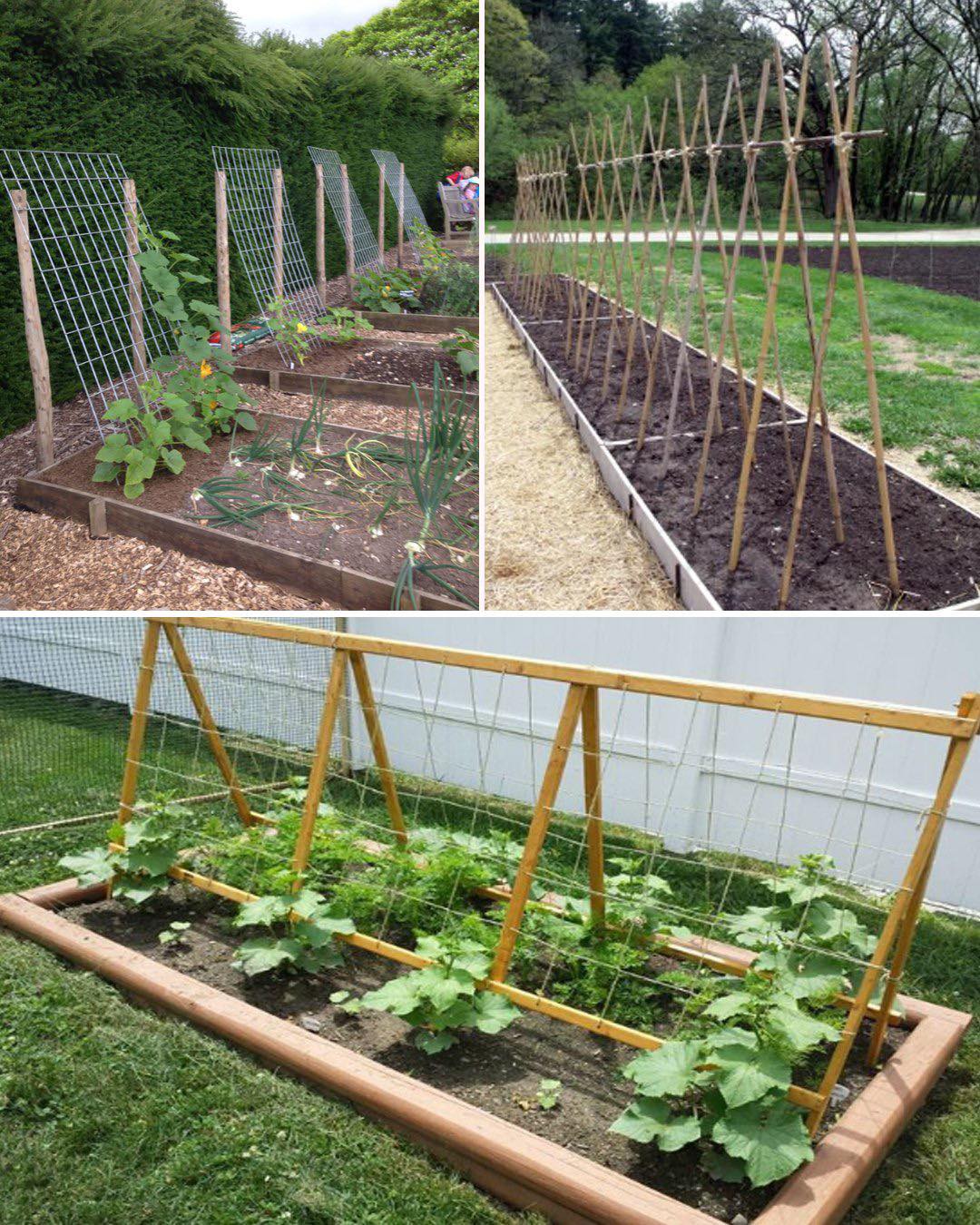In the realm of gardening, innovation is key. As urbanization continues to encroach upon traditional farmlands, the need for space-efficient gardening techniques becomes increasingly pressing. One such innovation that is gaining traction is the practice of growing cucumbers, pumpkins, and squashes vertically on trellises. This revolutionary approach not only maximizes space but also offers several other benefits that traditional ground-based cultivation cannot match.

Traditionally, cucumbers, pumpkins, and squashes are grown sprawling across the ground, requiring ample space and leading to issues such as weed infestation, pest attacks, and fruit rot. However, by utilizing trellises, these vining plants can be trained to grow upwards, making efficient use of vertical space and minimizing the aforementioned problems.
One of the primary advantages of growing cucumbers, pumpkins, and squashes on trellises is the significant space savings. In urban environments where garden space is limited, this vertical approach allows gardeners to cultivate these crops even in small backyard plots or on balconies. By going vertical, gardeners can expand their growing potential without encroaching on valuable living space.
Moreover, vertical gardening offers better air circulation and sunlight exposure, which are essential for the health and productivity of plants. When vines are trained to grow upwards on trellises, air can circulate more freely around the foliage, reducing the risk of diseases caused by stagnant air and promoting faster drying of leaves after rain or irrigation. Additionally, positioning plants vertically allows for more uniform exposure to sunlight, ensuring that all parts of the plant receive adequate light for photosynthesis and fruit development.

Another advantage of trellis-based cultivation is improved pest and disease management. By keeping the foliage off the ground, trellises help to deter ground-dwelling pests and reduce the risk of soil-borne diseases. Furthermore, the elevated position of the fruits makes them less accessible to ground-dwelling pests such as slugs and snails, resulting in fewer instances of damage to the harvest.
In addition to these practical benefits, growing cucumbers, pumpkins, and squashes on trellises can also enhance the aesthetic appeal of the garden. The vertical growth habit creates a visually striking display, with lush foliage and colorful fruits cascading down the trellis. With careful planning and selection of trellis designs, gardeners can create beautiful and functional living walls that serve as focal points in outdoor spaces.
When it comes to trellis designs for growing cucumbers, pumpkins, and squashes, the options are virtually endless. From simple wooden structures to elaborate metal frameworks, there are numerous designs that cater to different preferences and space constraints. Some gardeners opt for traditional A-frame trellises, while others choose to repurpose existing structures such as fences or pergolas. Whichever design is chosen, the key is to ensure that it provides adequate support for the weight of the vines and fruits and allows for easy access for maintenance tasks such as pruning and harvesting.
The practice of growing cucumbers, pumpkins, and squashes on trellises represents a revolutionary approach to urban gardening. By harnessing the power of vertical space, gardeners can overcome the limitations of traditional ground-based cultivation and enjoy a host of benefits including space savings, improved air circulation and sunlight exposure, and enhanced pest and disease management. With the right trellis design and proper care, vertical gardening offers a sustainable and visually stunning solution for growing these beloved crops in any outdoor setting.
News
JJ Redick reacts to Luka Doncic trade for Anthony Davis
In one of the most jaw-dropping moves of the season, the NBA landscape was rocked by the blockbuster trade involving Luka Dončić and Anthony Davis—a swap that has sent ripples of excitement, disbelief, and heated discussion through the league. Among…
Anthony Davis FULL reaction to trade to Mavericks for Luka Doncic
In a blockbuster move that sent shockwaves through the NBA and left fans reeling, Anthony Davis has been traded to the Dallas Mavericks in exchange for Luka Dončić. In the immediate aftermath of the news, Davis took to the media…
Shaq reacts to Dallas Mavericks wanting Kevin Durant after Luka-AD trade 👀
In the constantly shifting world of the NBA, trade rumors and blockbuster moves are a regular part of the season’s drama. The latest twist has fans buzzing: the Dallas Mavericks have reportedly set their sights on acquiring Kevin Durant in…
Donovan Mitchell FILTHY poster dunk on Kristaps Porzingis 😳
In a game filled with high-intensity moments and jaw-dropping highlights, one play in particular has left fans and analysts buzzing about Donovan Mitchell’s latest display of athleticism. Early in the contest, with the atmosphere already charged by an evenly matched…
Joel Embiid hits go-ahead bucket vs Mavs then chats with Anthony Davis after game
In one of the most thrilling contests of the season, Joel Embiid delivered a clutch performance against the Dallas Mavericks, punctuating the game with a go-ahead bucket that sent the home crowd into a frenzy. The atmosphere in the arena…
D’Angelo Russell game winner as Nets hit two 3’s in 3 seconds to win vs Rockets 😱
In one of the most electrifying moments in recent NBA history, D’Angelo Russell delivered an unforgettable game-winner that left fans and commentators in complete awe. With the Brooklyn Nets locked in a tense battle against the Houston Rockets, the outcome…
End of content
No more pages to load











